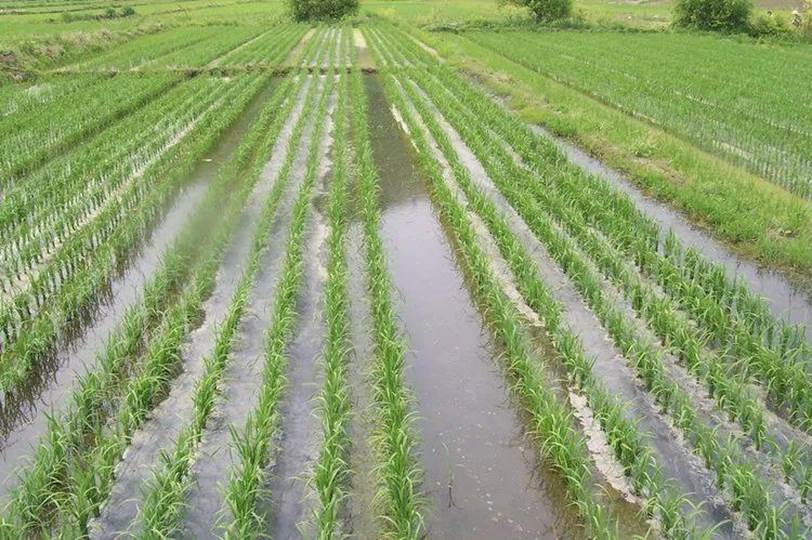Key points of rice management at tillering stage
The rice tillering period is a critical period for determining the quantity and quality of effective tillers, and is the basis for high yield, so the management of the rice tillering period is extremely important. The following will introduce in detail how to scientifically manage rice in the tillering stage.
1. Water management
A. Transplanting fiel
After the rice is transplanted, the water depth of the rice field should be maintained at 3-4 cm, so that a suitable heat preservation and moisturizing environment can be formed in the field to promote the germination of new roots and the rice to quickly turn green. After entering the greening period, the seedlings also enter the tillering period. At this time, the water depth should be kept at 2-3 cm. During this period, if the temperature exceeds 30℃, the water level should be raised appropriately to prevent the seedlings from being scalded or accelerate the root senescence. When the rice reaches the expected number of tillers, it should be drained and dried in time. Sun-dried fields can inhibit ineffective tillers, promote the transformation of rice from vegetative growth to reproductive growth, and have a good promoting effect on the cultivation of high-quality rice. The principle of sun drying: the time of sun drying in clay fields, low-lying fields, and over-fertile fields is longer, while the time of sun drying in sandy fields and barren fields is shorter. Generally, it is sun-dried until small cracks appear on the field surface, the mud will not be touched when the foot is stepped on, the leaf color becomes lighter, and the leaves stand upright.

Maintain the water depth at 3-4cm
B. Direct seeding fiel
We should always pay attention to the growth of seedlings, and the management before tillering is the same as that of transplanted fields.
2. Apply tillering fertilizer earl
The amount of fertilizer required for rice gradually increases after turning green. At this time, the roots are mostly distributed in the topsoil and the nutrient supply is insufficient, so it is necessary to apply tillering fertilizer early, generally 5-6kg of urea per 666㎡, evenly spread, shallow water irrigation. The principle of fertilization is less fertilization in fertile fields and more fertilization in barren fields. Tillering fertilizer is generally applied immediately after turning green, but it should not be flooded. It can be applied 80% first, and the remaining 20% depends on the growth of the seedlings. W The areas with good growth should be less applied and the areas with poor growth should be more applied. Keep a shallow water layer in the field after fertilization, which cannot be drained, and re-irrigate after it dries naturally.
3. Pest control
The main disease is leaf blast. Mix 100g of mancozeb 80% and 30kg of water per 666㎡ and spray it evenly. The main pests are rice stem borers and rice planthoppers. The control method of rice stem borers is to mix 100ml of triazophos EC or 50g of monosultap with 30kg of water per 666㎡ and spray it evenly. The control method of rice planthopper is to mix 20g of imidacloprid WP or 100ml of dichlorvos with 30 kg of water per 666㎡ and spray it evenly.
4. Check and supplement seedlings
All the rice should be checked in time after germination, and the seedlings should be supplemented at the 3~4 leaf stage of the rice seedlings to ensure the uniformity of the seedlings, the seedling age should not exceed 35 days (different rice varieties and different times), otherwise the number of ears will decrease due to the decrease of tillers.

Tel: +86-21-58357653

Trading Office: Room 1201, Building B,Yujing International Business Plaza,No. 555 Pudong Avenue, Pudong,Shanghai,China.

E-mail: oreo.yum@oasisagro.com
About us
Stay with Oasis and find easier way to cultivate



Solutions

